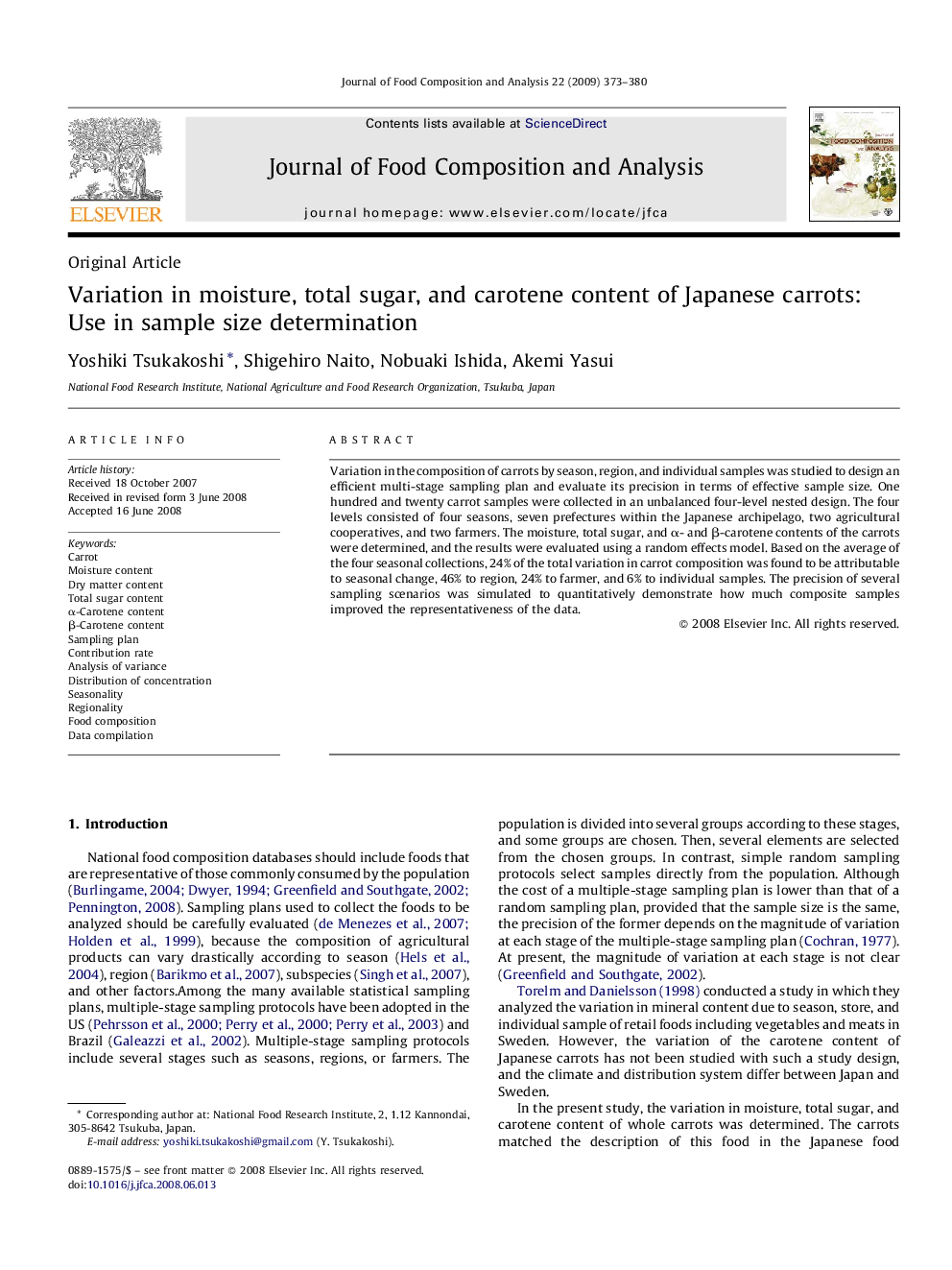| کد مقاله | کد نشریه | سال انتشار | مقاله انگلیسی | نسخه تمام متن |
|---|---|---|---|---|
| 1218944 | 967633 | 2009 | 8 صفحه PDF | دانلود رایگان |

Variation in the composition of carrots by season, region, and individual samples was studied to design an efficient multi-stage sampling plan and evaluate its precision in terms of effective sample size. One hundred and twenty carrot samples were collected in an unbalanced four-level nested design. The four levels consisted of four seasons, seven prefectures within the Japanese archipelago, two agricultural cooperatives, and two farmers. The moisture, total sugar, and α- and β-carotene contents of the carrots were determined, and the results were evaluated using a random effects model. Based on the average of the four seasonal collections, 24% of the total variation in carrot composition was found to be attributable to seasonal change, 46% to region, 24% to farmer, and 6% to individual samples. The precision of several sampling scenarios was simulated to quantitatively demonstrate how much composite samples improved the representativeness of the data.
Journal: Journal of Food Composition and Analysis - Volume 22, Issue 5, August 2009, Pages 373–380